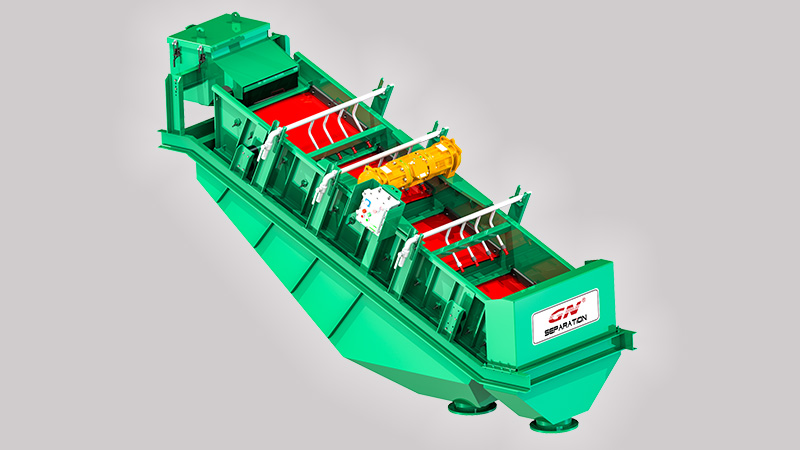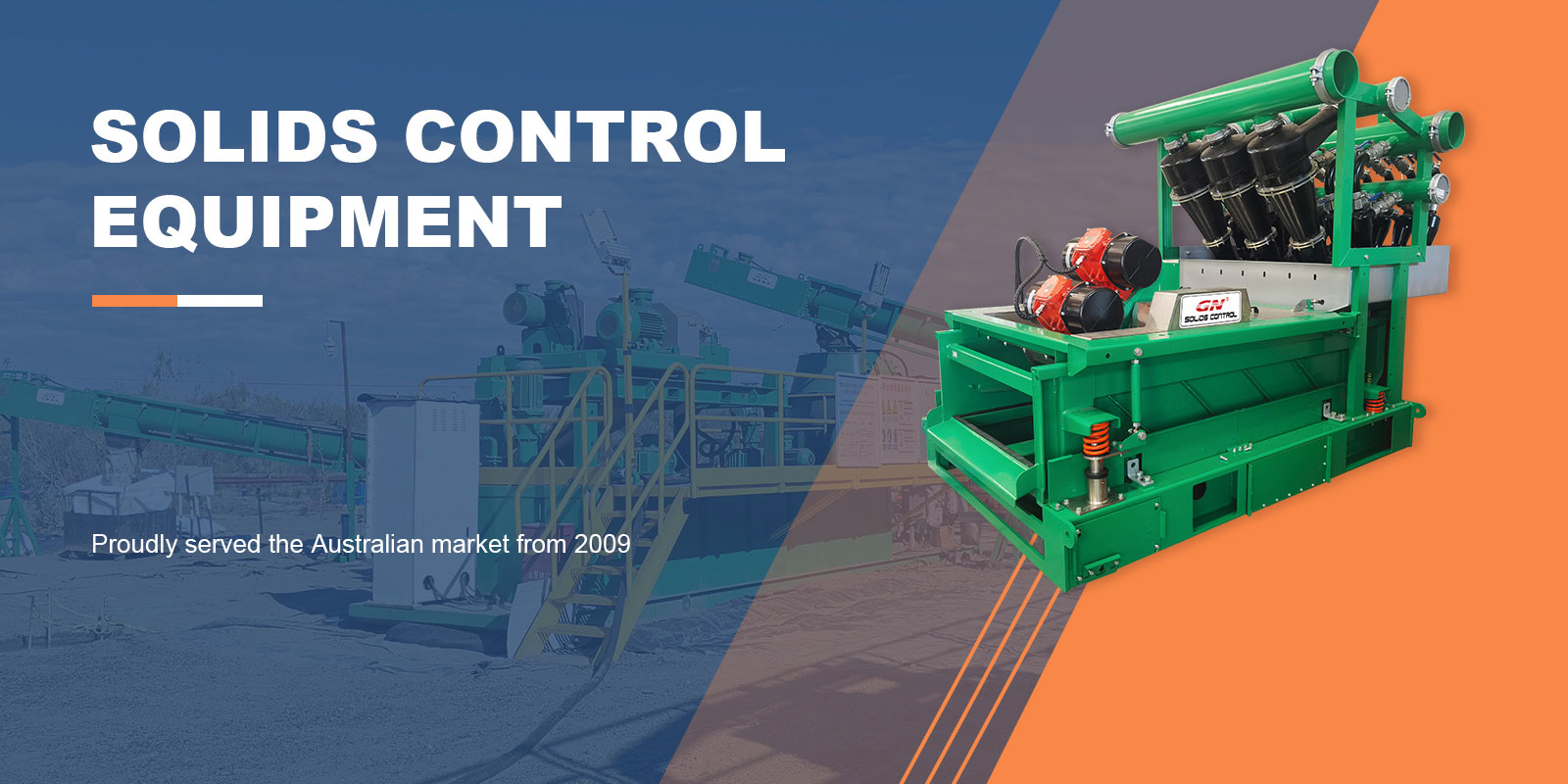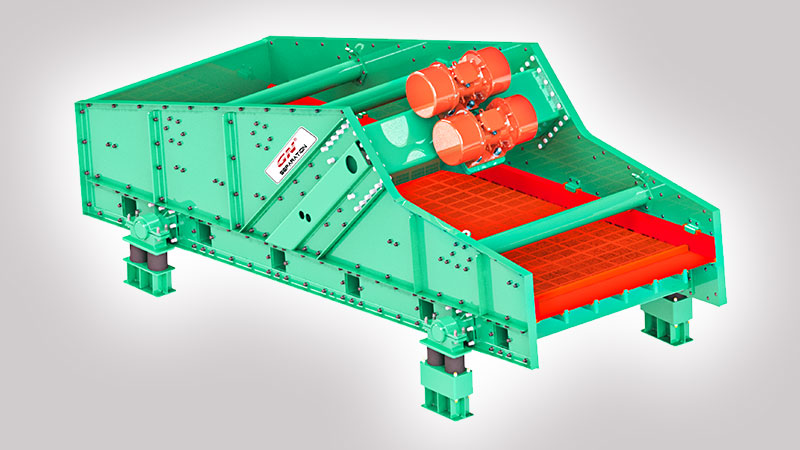-
Structural Optimization and Performance of High Shear Screens in Silica Sand Beneficiation
(News)
2025-11-17 00:53:03
As product specifications for silica sand become increasingly stringent, conventional screening equipment often struggles with fine-particle passage and removal of clay films. The high shear screen,...
-
GN Stack High-Frequency Vibrating Screens Supports Iron Ore Processing in China
(News)
2025-11-09 14:18:17
China’s iron ore processing sector has achieved a breakthrough with the widespread adoption of stack high-frequency vibrating screens, significantly enhancing grinding efficiency and concentrate...
-
Advanced Coal Preparation Solutions with GN Vibrating Screens
(News)
2025-11-07 07:34:29
In modern coal preparation, efficiency, reliability, and environmental performance are the top priorities for every coal washing plant. GN Separation offers a complete range of high-performance...
Structural Optimization and Performance of High Shear Screens in Silica Sand Beneficiation
As product specifications for silica sand become increasingly stringent, conventional screening equipment often struggles with fine-particle passage and removal of clay films. The high shear screen, with its high acceleration, strong tangential motion, and stable material dispersion capability, has therefore emerged as a key device in modern wet classification and desliming circuits.
The technical advantage of the high shear screen centers on its single-motor eccentric drive mechanism. The eccentric drum generates a controlled circular shear motion, allowing the screen deck to achieve high instantaneous acceleration with only a small amplitude. This motion rapidly loosens, stratifies, and spreads the feed material into a thin bed across the screen surface. In silica sand wet screening—especially within the 0.1–0.6 mm range—this shear action effectively disrupts water films and clay coatings, significantly improving fine-particle screening efficiency.

To withstand the high hardness and abrasive nature of silica, modern high shear screens commonly adopt a multi-section screen box with reinforced structural members. This improves stiffness, reduces fatigue risk, and ensures long-term mechanical stability. The screen panels are typically flexible polyurethane modules that maintain consistent open-area performance while resisting impact and wear. Their elasticity also helps reduce blinding under continuous slurry flow. Many units are equipped with imported vibration motors to deliver stable excitation force over long operating cycles, making the equipment well-suited for continuous wet beneficiation.
Overall, the design philosophy of the high shear screen focuses on increasing the energy density applied to the screen surface, enabling more complete liberation and dispersion of fine silica particles and enhancing classification precision.
In actual processing circuits, the high shear screen shows strong stability in both desliming and fine classification. Field applications indicate that it can reduce raw feed mud content from 3–5% to below 0.5%, providing a cleaner and more consistent feed for downstream scrubbing, magnetic separation, and dewatering stages. Compared with conventional linear screens, improvements include a 15–30% increase in fine-particle passage, reduced recirculating load, and more consistent screen performance over long service intervals.
In summary, the high shear screen—through its unique shear motion, reinforced structural design, and superior fine-particle handling—has become an effective solution for enhancing classification efficiency and product stability in silica sand beneficiation. It provides improved desliming, higher screening accuracy, and more reliable operation, supporting the production of high-purity silica products required by modern industrial applications.
GN Stack High-Frequency Vibrating Screens Supports Iron Ore Processing in China
China’s iron ore processing sector has achieved a breakthrough with the widespread adoption of stack high-frequency vibrating screens, significantly enhancing grinding efficiency and concentrate quality. These advanced screens, featuring high-frequency vibration (upto 25 Hz) and low amplitude, excel in fine particle classification, particularly in wet screening applications like iron or processing. GN Separation, as one of the leading brands for the vibrating screen designers and manufacturers, are providing clients with high performance vibrating screens including the stack high frequency ones.
.jpg)
Features of stack vibrating screens:
1. Multi-decks: The equipment improves efficiency by utilizing multi-layered screening decks, each deck is equipped with screen meshes with same opening apertures. Then by using one set of 2 vibrating motors as drive, it can multiply the treating capacity without increasing the foot print.
2. vibrating frequency is comparably high, and this factor enables the machine to separate particles rapidly and also helps the machine to do a precise classification and reducing over-grinding of fine ores. In practice, based on some jobsite data, like in an iron mine project, the deployment of stack high-frequency screens improved grinding classification efficiency by 10% and increased processing capacity too. Similarly, at another Iron Mine, the technology boosted regrinding system throughput while reducing energy consumption by 15%. Industrial trials show these screens achieve an average concentrate grade of 65.62%, with mass recovery rates exceeding 78%.
3. GN stack vibrating screens are using polyurethane screen meshes with small openings. Compared to traditional nylon screens, using of this type of screen meshes cuts maintenance costs by 30%. Experts highlight its role in optimizing iron recovery from low-grade ores.
In aligning with China’s push for sustainable resource utilization. As the technology matures, it is set to become a standard in global iron ore beneficiation. GN Separation is providing clients in domestic China with the internationally high technology equipment. If you have such project which are in need of stack vibrating screens, you can contact GN team for consultancy.
Advanced Coal Preparation Solutions with GN Vibrating Screens
In modern coal preparation, efficiency, reliability, and environmental performance are the top priorities for every coal washing plant. GN Separation offers a complete range of high-performance vibrating screens and screening equipment designed to maximize clean coal recovery, reduce maintenance, and enhance process stability. With more than 17 years of experience in solid-liquid separation, GN has become one of China’s leading suppliers in the coal and mining industry.
Precision Screening for Every Process
At the heart of any coal processing plant is the screening system. GN’s line of mining vibrating screens covers every stage of the process — from raw coal classification to fine coal dewatering.
For coarse coal, the GN Large Linear Vibrating Screen (GNLS3061) performs the primary separation at 50 mm, ensuring stable feed to the heavy medium circuit. Mid-size coal is classified by the GN Classification Vibrating Screen (GNLMP1836) at 13 mm and 0.5 mm to achieve precise particle separation. The +13 mm fraction enters the heavy medium system, while the finer material proceeds to the cyclone and flotation stages.
The clean coal and middlings are rinsed on a GN Dewatering Vibrating Screen (GNLMZ1536), which combines strong linear motion with high drainage capacity. For final product dehydration, the GN High Frequency Vibrating Screen (GNFG1232) delivers superior dewatering efficiency and moisture control, reducing product moisture to around 15%.
For lump coal handling, the GN Large Banana Vibrating Screen (GNBS3061) offers a large screening area with high throughput and stable operation — ideal for heavy-duty industrial applications.
Durable and Efficient by Design
All GN vibrating screens feature robust, non-welded structures and advanced finite element optimization to ensure long service life under high vibration intensity. Each machine is equipped with imported vibration motors (Martin or OLI), ensuring reliable operation and minimal downtime.
The screen decks use GN Polyurethane Screen Panels, known for their elasticity, wear resistance, and anti-blinding properties. With opening rates between 28% and 45%, these panels deliver both high screening efficiency and long lifespan — often exceeding six months of continuous operation.
GN’s modular panel design makes screen replacement fast and easy, reducing maintenance costs and improving equipment availability.
Proven Global Performance
GN Separation’s equipment operates in over 70 countries, serving projects in coal, mining, and mineral processing. The company’s manufacturing bases in Tangshan and Langfang, along with subsidiaries in Houston (USA) and Brisbane (Australia), provide fast delivery and local technical support to international customers.
By combining precision design with strong production capacity, GN helps coal producers achieve higher efficiency, lower water consumption, and greater environmental compliance. Plant data show that GN’s screening solutions can increase clean coal yield by 3–5% and improve water recycling efficiency to over 95%.
Conclusion
From primary classification to fine coal dewatering, GN’s screening equipment provides a complete, energy-efficient solution for the modern coal washing plant. With its advanced technology, durable construction, and global service network, GN Separation continues to lead innovation in the field of coal preparation and vibrating screen manufacturing — delivering performance that drives productivity.
Application of Stack High-Frequency Fine Screens in Spodumene Classification
As the demand for lithium continues to grow globally, efficient processing of spodumene ore—the main source of lithium—is becoming increasingly important. In the beneficiation and purification process, particle size classification plays a decisive role in improving recovery rate and concentrate quality. Among various separation technologies, the stack high-frequency fine screen has proven to be one of the most effective solutions for fine screening and desliming in lithium processing plants.
1. Characteristics of Spodumene Classification
Spodumene ore is typically fine-grained and associated with gangue minerals such as quartz, feldspar, and mica. During grinding and desliming, the ore slurry often contains a high proportion of -0.1 mm particles, which makes precise classification difficult. Traditional vibrating screens or spiral classifiers often struggle to achieve efficient separation at such fine sizes, leading to reduced lithium recovery and increased circulating load.
2. Working Principle of Stack High-Frequency Fine Screens
A stack high-frequency fine screen consists of multiple screen decks arranged vertically within a compact structure. Each deck operates independently with a high vibration frequency (up to 50 Hz), generating strong stratification and separation forces. Fine particles pass through the mesh rapidly, while coarse particles are efficiently discharged.
Key features include:
- High screening efficiency for particles as small as 0.038 mm.
- Multi-deck design, maximizing capacity in limited plant space.
- Modular structure, easy for installation and maintenance.
- Low energy consumption compared with hydrocyclones.
3. Application in Lithium (Spodumene) Processing
In spodumene classification, stack high-frequency screens are typically used after grinding or before flotation. Their precise separation capability allows:
- Removal of ultra-fine slimes, improving flotation selectivity.
- Better particle size control, ensuring stable flotation feed.
- Increased lithium concentrate grade and recovery rate.
- Reduced water and reagent consumption, enhancing plant economics.
Compared to traditional wet screening or hydrocyclone classification, high-frequency fine screens deliver 20–30% higher efficiency and finer product control, directly improving downstream flotation performance.
4. Conclusion
The stack high-frequency fine screen has become a core technology in modern lithium and spodumene processing. With high precision, compact design, and energy-efficient operation, it provides a reliable solution for fine classification and desliming. As global lithium production expands, these advanced screening systems will continue to play a key role in achieving higher recovery, cleaner concentrates, and more sustainable mineral processing.
GN Successfully Attended China Coal Mining EXPO2025
Last week, the 2025’ China Coal Mining EXPO was successfully closed. This year’s CCME was historically large, and totally 10 exhibition halls was put into use to give enough space for hundreds of exhibitors in the mining industry.
This time GN Separation brought to the exhibition their core products and new products as following:
1. Flip flow vibrating screen: flip flow vibrating screen is one of the 3 large mining vibrating screens, the one GN showed on its stand was a double deck one. The upper deck is applied with screen meshes for remove the large particles, which can both increase the whole treating capacity of the machine and meanwhile protect the lower deck’s screen panel. The lower deck is using the flip-flow screens, which is more flexible, with rectangle shape openings. This design is more suitable for the dry materiel which is in fine particles and with larger viscosity and moisture.
2. A decanter centrifuge, the one GN put on its stand was a small sized decanter centrifuge. In practice, in mining industry, the decanter centrifuge GN provided to clients in mining industryare always large bowl decanter centrifuges which are used to replace the filter presses for the mining tailing projects.
3. Coal sump sludge dewatering unit. This is a new and useful compact unit GN Separation designed and lead into market. It has two stages for separating, with shaker deck and cyclones. And the cut point is 25micron. If you need more clean liquid or to remove extra fine particles, you can choose above mentioned decanter centrifuge for the 2-5 micron cut point.
Comparing with a normal manufacturer, GN Separation is more of a solution provider for separation works by combining its various of equipment used for separating or environment protection. If you have similar project or inquiry, or even interest, welcome to contact GN team for consultancy.

